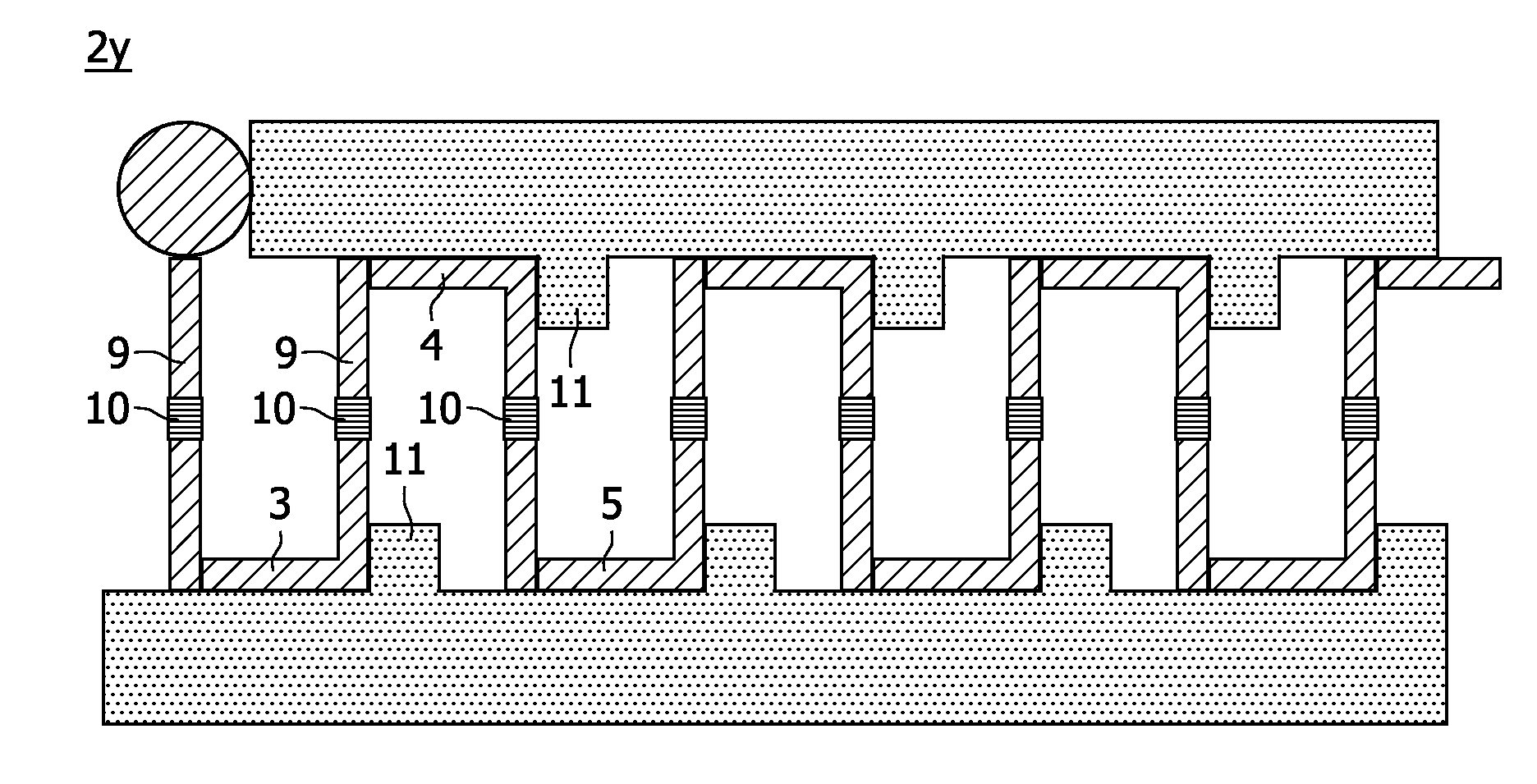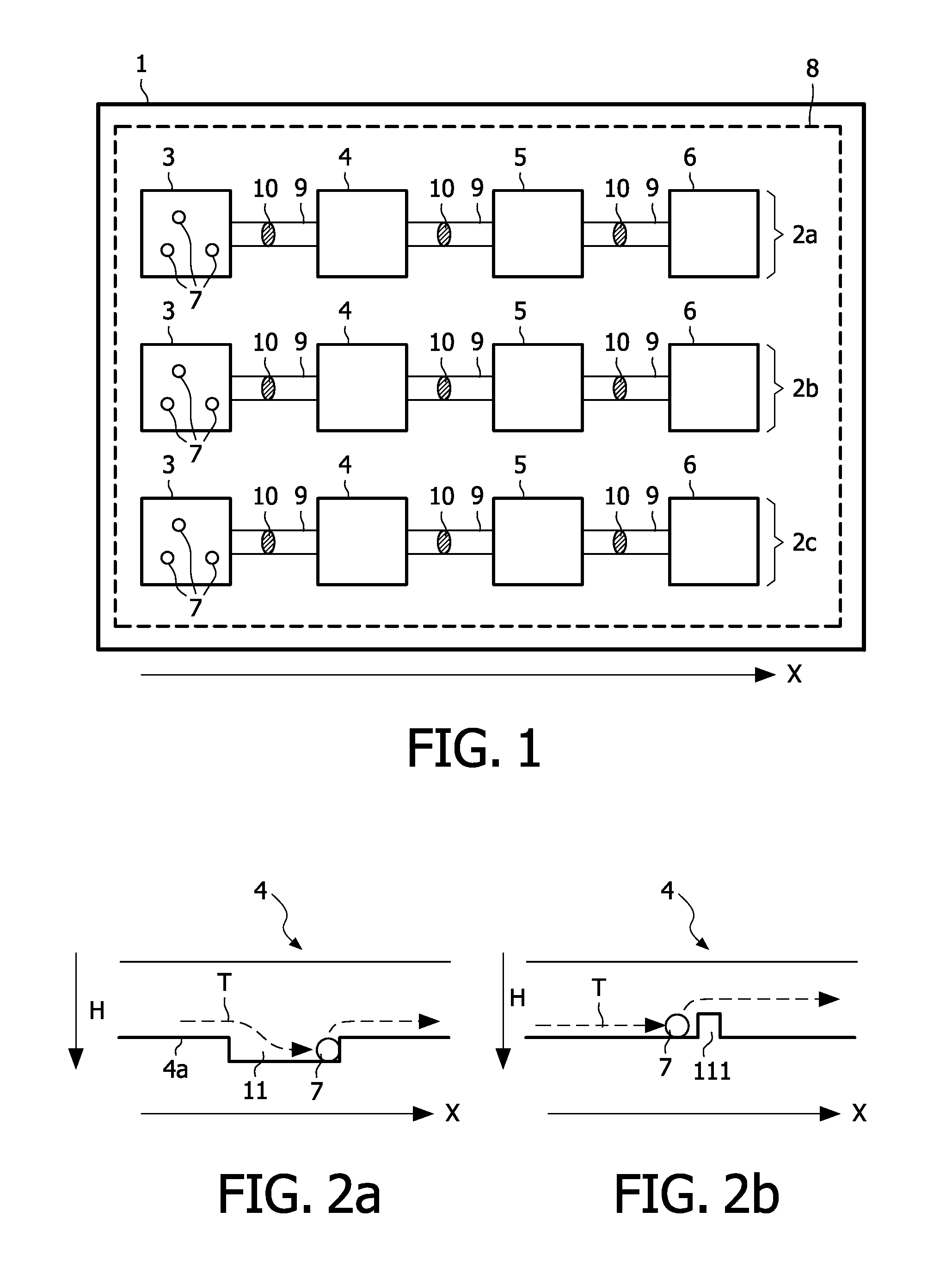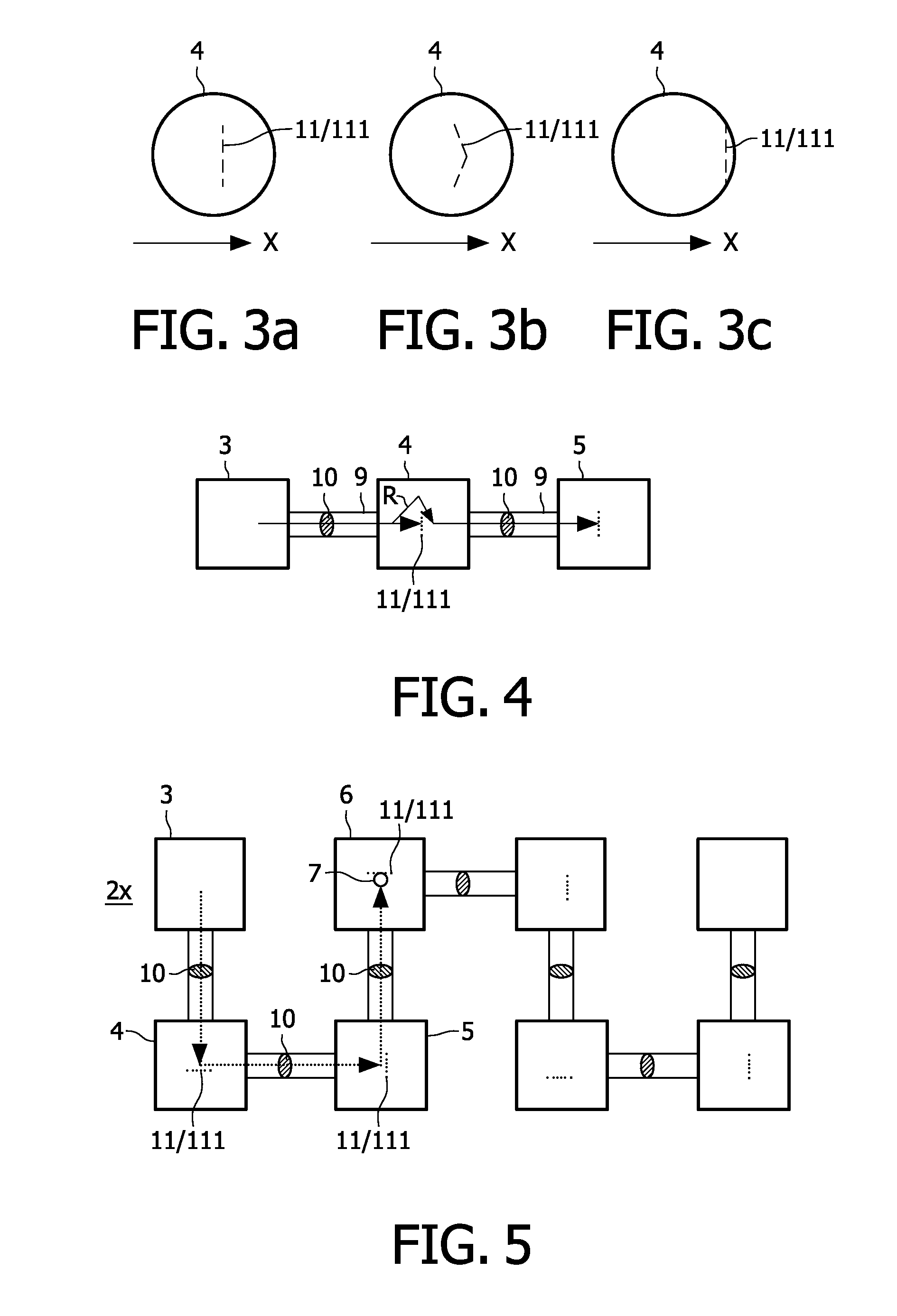Microfluidic device
a fluidic device and micro-fluidic technology, applied in the direction of positive displacement liquid engine, laboratory glassware, instruments, etc., can solve the problems of inability to independently control the individual processing modules, the inability to miniaturize individual magnetic field generating units of the respective processing modules, and the inability to miniaturize individual magnetic field generating units for the respective processing modules. , the undesirable effect of different or non-ideal chemical, biochemical or physical processes in the chamber
- Summary
- Abstract
- Description
- Claims
- Application Information
AI Technical Summary
Benefits of technology
Problems solved by technology
Method used
Image
Examples
Embodiment Construction
[0028]Embodiments of the present invention will now be described with reference to the drawings. First, the general structure will exemplarily be explained with respect to FIG. 1. FIG. 1 schematically shows a microfluidic device 1 comprising a plurality N of processing modules 2a, 2b, 2c which are arranged in parallel with respect to a processing direction X (in the illustration three processing modules (N=3) are shown). Although an arrangement of three processing modules 2a, 2b, 2c is shown, the embodiment is not restricted to this specific number and other numbers such as e.g. N=5; 10; 1000; 105 or even higher and other numbers are also possible. Each processing module comprises a plurality of chambers 3, 4, 5, 6 (only schematically indicated in FIG. 1). Although four chambers 3, 4, 5, 6 per processing module 2a, 2b, 2c are shown in FIG. 1, the embodiment is not restricted to this number and different numbers of chambers may be provided. In particular, a much higher number of cham...
PUM
 Login to View More
Login to View More Abstract
Description
Claims
Application Information
 Login to View More
Login to View More - R&D
- Intellectual Property
- Life Sciences
- Materials
- Tech Scout
- Unparalleled Data Quality
- Higher Quality Content
- 60% Fewer Hallucinations
Browse by: Latest US Patents, China's latest patents, Technical Efficacy Thesaurus, Application Domain, Technology Topic, Popular Technical Reports.
© 2025 PatSnap. All rights reserved.Legal|Privacy policy|Modern Slavery Act Transparency Statement|Sitemap|About US| Contact US: help@patsnap.com



